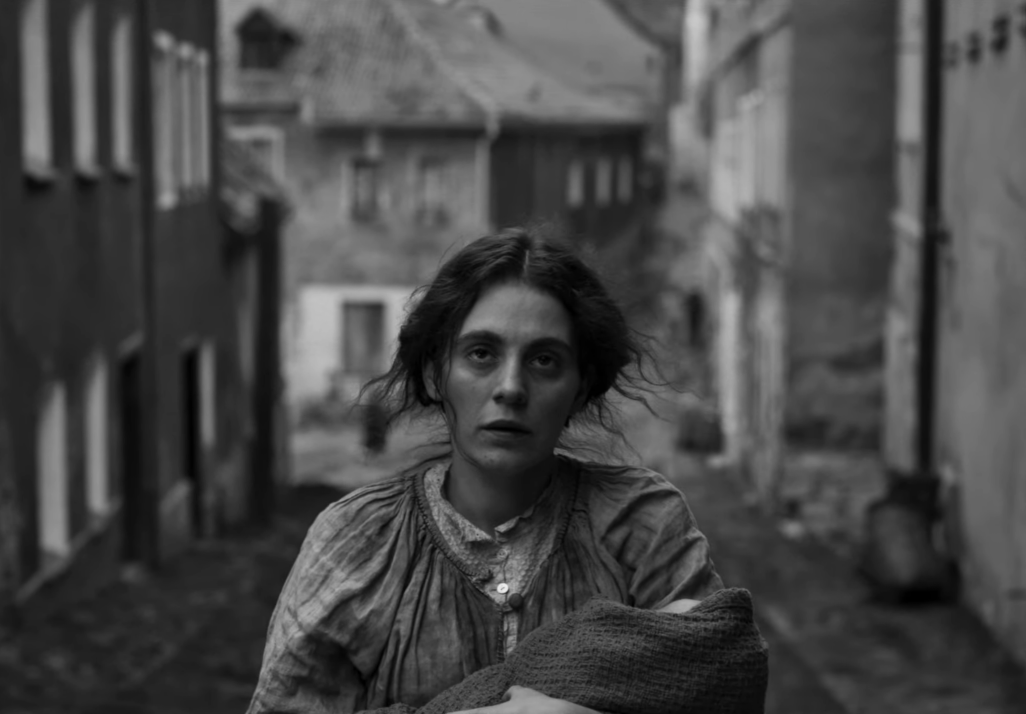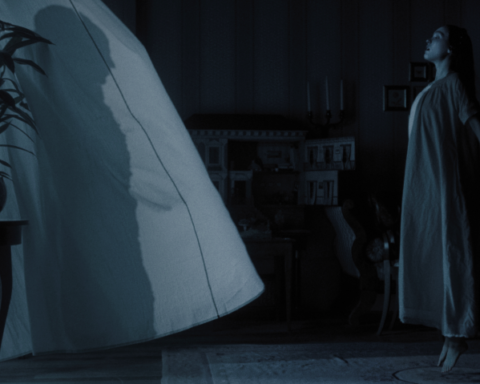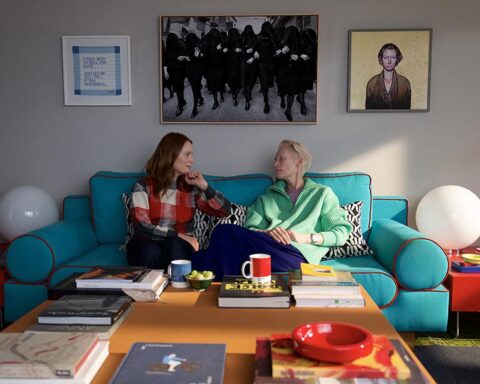Pigen Med Nålen (2024)
The Possibility of Being Good in Hell
A striking prologue: tense strings starting before the screen even lights up, a deafening sound design, and superimposed distorted human faces caught between reality and hallucination… Sounds familiar, doesn’t it?
Magnus Von Horn’s third feature film “Pigen med nålen” is inspired by the true story of Dagmar Overby, one of Denmark’s most notorious serial killers. Set in post-World War I Copenhagen, the film focuses on the devastation caused by the war, highlighting poverty, despair, and hopelessness.
Copenhagen, 1919. Karoline, a young worker, struggles to survive. When she becomes pregnant, she meets Dagmar, a charismatic woman who runs an illegal adoption agency. A strong bond forms between the two women, and Karoline accepts a role as a nanny by her side.
Even though Denmark didn’t physically participate in the war, it’s impossible to isolate from the era’s atmosphere, reminiscent of the setting described in Knut Hamsun’s “Hunger.” While the film is adapted from the story of a serial killer, its focus isn’t on Dagmar but on Karoline, an innocent young peasant woman whose husband has gone to war. The director’s choice inevitably elicits empathy and even pity from the audience, aligning them with Karoline amidst a nightmare of pure evil – it appears to be a deliberate manipulation of these emotions within the film’s nightmarish universe. Karoline’s miserable life continues to spiral downward, sinking deeper just when a glimmer of hope seems to appear.
Yet, her will to live prevails; the resilience she shows in the face of every hardship provides a faint but significant ray of hope for her to continue her life (this light is also a motivation for the audience to keep watching the film). In the second part, the director pauses the shock effect to focus on the story. In the final part, the film highlights societal hypocrisy through the tragic babies, incorporating conflicts between the killer and the families forced to give up their babies. Karoline even breaks the fourth wall a few times, seemingly to include the audience in this critique, perhaps confronting them with their own hypocrisy. (Vic Carmen Sonne’s performance is again amazing).
Could the needle be a metaphor for the possibility of escaping this life? The only option left, forcing one towards the lesser of two evils… As Karoline pricks herself with the needle in the factory and then her baby in the tub, should the audience also direct some self-criticism towards themselves?
The repeated image of workers leaving the factory – could this be a reference to the Lumières or the dawn of cinema? Maybe it was to bridge the gap between the film and real life, questioning if what you’re watching is just a movie?
The film, much like “M,” opens with a grim depiction of the city, utilizing the dirty backstreets and cramped attic apartments of Copenhagen. The film employs the aesthetics of German Expressionism, clearly showing the director’s influence from Fritz Lang; throughout the film, you frequently encounter traces of “Das Testament Des Dr. Mabuse” and “M.” Featuring the dark narrative and storytelling style of crime films, the film opts for high-contrast monochrome imagery – exaggerated use of light and shadow, and distorted perspectives dominate. The visual and auditory aesthetics of the film are undeniably strong; the achievements of Cinematographer Michal Dymek and set designer Jagna Dobesz are noteworthy (the sound design inevitably reminds one of “Zone of Interest”). Especially in the first part, there’s an atmosphere of endless horror and pure fear, often accompanied by distorted images and chaotic sound design. However, the director’s aim to create an almost continuous shocking effect on the audience leaves very little room to breathe; after a while, it unfortunately turns into an over-aestheticized provocation, straying from its purpose.
Nonetheless, when the film’s technical success is separated from its aim to manipulate a powerful story, it certainly results in a film worth watching.
“Pigen med nålen” premiered in the Competition Section of the 77th Cannes Film Festival.
Nil Birinci






